
Sometimes (from memory - it's been over two decades for me), no matter how fit one was or how hard one trained, it often just boiled down to mental approach. This - rare, let's face it - ability to convince oneself that the seemingly impossible is actually achievable sets many sportsmen and women apart and elevates them that extra few percent above the chasing pack.
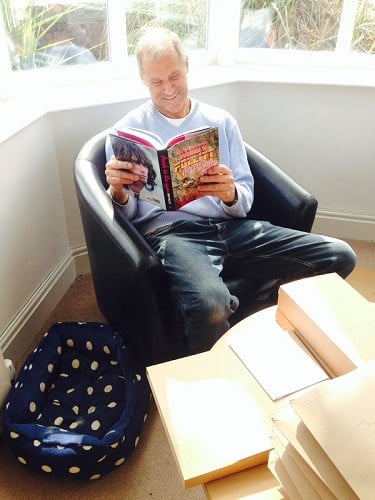
The whole 'psyching up' thing could actually take many, many weeks, if not years. Unspoken to even the closest of friends, just a seed germinating within one's gut, heart and head, always in the back of one's mind, sometimes slap-bang in the front but shhhh, don't say a word, you'll jinx yourself.
"I can do it, I can. And I will" was a regular mantra for me whilst crawling into bed after another night out down the boozer way back when. 'When?' When Jerry was either still training or psyching up for the next big route - that's when.
Back in the eighties (don't laugh) when Jerry, Chris Gore, Martin 'Basher' Atkinson and I shared a house and hung out with some of the strongest climbers of the time like Tim Freeman, Pete Kirton, Mark Leach and Chris Hamper, each of our lives basically revolved around training and cragging and Jerry was always – always - the most 'pumped up' of the lot of us.
'In the head' I always thought was pivotal to success or failure and Jerry had that degree of self-belief way more than anybody I ever knew back then. Apart from being extremely talented physically - and training before it was even really invented - he'd often say stuff like "I'm going to France to do their hardest routes" or "America too". And he did. Cocky b*gger? Yes and no. Good 'headspace' going on there; 'Master of his own Universe' in some ways I suppose while the rest of us were still doing dead hangs and pull-ups down the Sheffield Poly gym (or 'resting' with frozen peas on shoulders for 16 months due to severe over-training…Ughh, please don't remind me!).
But Jez's approach to climbing the hardest routes of the time were definitely as much mental challenges as physical and he 'nailed' it and tied on with an 'upper hand' for every ascent. Just think: Phoenix in America, onsight flash; repeats of Genesis in Colorado and Midnight Lightning in Camp 4, then first ascents of The Face in the Frankenjura and Revelations, Master's Wall and others back on home soil.
I did kind of take a similar self-belief in 1986 on a lovely day at North Stack Wall, Gogarth with Leachy but had to invent my own mental motivation and to tell the God's honest truth I wasn't one tiny little bit scared. Mental approach see. I just reckoned if I can get to over 70 feet up The Bells, The Bells! onsight I'd either top out and live or fall off and die with a horrible splat. To this day I cannot express how 'out there' it felt to be so 'out there' on a limb with a busted fingertip pishing blood all over the tiny, random holds yet in the comfortable 'death zone' where anywhere lower would've meant wheelchair for life.
Nah, but Jerry's self-belief and preparation was a delight to observe and be around 'back then' and I for one fed off his immense drive. Even though I left Great Britain for good in 1993 and am now an Australian Citizen, part of me will forever reside up there - the best parts dossing next to my best mate in a Tremadog hay barn as kids, then more comfortably in our share-house on Hunter House Road in Sheffield.
For anybody wanting to get that extra edge with self-motivation, read Jerry Moffatt's upcoming book and up your grade a few notches overnight at the same time.
(That'll be fifty quid please, Jez.)
AP: So, Jez, well who'd've thought we'd be 'chatting' like this back in 1980 when we were just young lads and embarking on our missions, eh? Guess we both did alright in the end. I recall from very early on how impatient we both were to improve, but you seemed to possess a certain 'extra edge' in the self-motivation department that I couldn't quite match. Can you pinpoint an actual time, place, event, person or route that was your 'Eureka' moment?
JM: 1980 seems quite a long time ago now, climbing was really serious for us both back then. You never imagine yourself being an old man talking about routes we did all those years ago. Before I started this book project it would be hard to pinpoint where my motivation came from.
I know now it comes from something in my unconscious. There have been masses of research to see what elite sports people have in common. What makes them want to try so hard, to put endless amounts of effort into an activity when others are quite happy to do a little bit and then just go to the pub. In most cases the drive comes from pretty horrible things in early childhood. You don't really think about them, they are locked up in the cupboard because you don't want to think about them. They are in the subconscious part of the brain and they strongly affect your emotions. For me that horrible thing was my dyslexia. Continually being bottom of the class in all subjects despite trying. At eight I had to sit another year again as I was bottom of the class, the next year I was still at the bottom and was asked to leave. I tried to get in a number of different schools but I remember repeatedly failing the entrance exams.
My parents were encouraging, telling me it didn't matter. At the same time they would go on about how clever this kid was or that kid, like it was really important. All that humiliation and frustration goes into the unconscious. Those unconscious emotions underpinned my motivation. I never ever think about it and didn't when I was climbing. Did I have a chip on my shoulder and want to prove everybody wrong? I had a huge chip and was just so determined to succeed at something. I don't particularly like it but I get obsessed with things.
If I had to pick the start I would say it would be Little Plum 8a at Stoney Middleton, because it was an open project everybody was trying and failing on. I was only 18 and I had probably done the first ascent of the hardest sport route in Britain.
AP: Harking back to our (later) teens, I always remember how motivated you were by John Gill the American boulderer and on home soil 'Big' Ron Fawcett's routes. Remember how we'd go traversing below Scalar wall at Forwyn and walk an hour each way to Carreg Hyll Drem near Tremadog virtually every evening? We talked climbing all the way there, climbed, and talked it all the way back to the hay barn. From memory you were very close to repeating Strawberries at that time and even though the ethics of the day were "blurred at the edges" you were so, so, mentally psyched up and it really was a significant achievement at just seventeen years of age.
So, shall we assume this route was another 'turning point' in your meteoric rise?
JM: Definitely great times at Tremadog. We didn't really know too much about climbing back then so with regards to ethics you got some of it wrong.
I think I spent three days on Strawberries doing it with one or two short rests on the rope. I was totally happy with that and thought that I had done it! I thought that if you fell off you just got back on and carried on. Crazy I know and a pity because I'm sure I could have led it if I spent another couple of days on it. Ron left his ropes clipped in overnight so that way it's almost like top roping it. It was still pretty big for me as like you said I was only 17 and I had only been climbing two years. I thought I was climbing great, then I went to the Peak District and got my arse kicked.
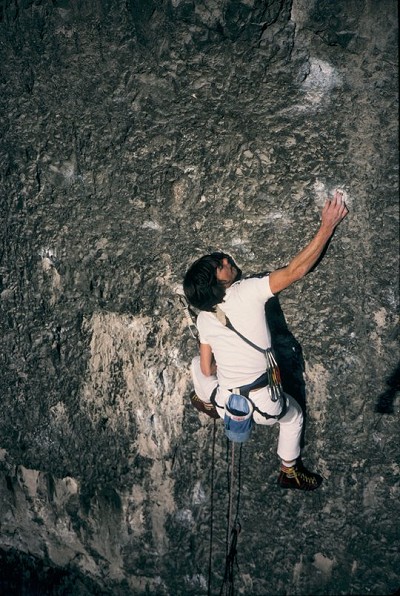
I don't imagine you got much sleep in the woodshed the night before when you 'knew' it'd being going down the next day? Furthermore, you wouldn't guess who would witness your ascent (doubtless much to their chagrin)!
JM: It's funny when you drive past Little Plum and look at it now it looks such a crappy route. Back in the early 80s Stoney Middleton had the most condensed number of hard routes of any cliff in the country. To get a first ascent there on something hard at the time was massive. I can remember a family friend asking me what my ambition was in climbing and I replied: 'To do Little Plum'. I can remember thinking if I do that and never do another climb my career will be successful. I wasn't really getting very close, then Kim Carrigan and Dougie Hall (who were top climbers at the time) walked past. I wanted to impress them and did it right there and then. They had both tried it and had also tried Genesis in Colorado. Genesis was supposed to be one of the hardest routes in the world and I remember them saying the difficulties the move felt about the same. After doing that crappy boulder problem route at Stoney I felt ready to take on the world.
AP: Of course, who could forget Master's Wall on Cloggy? A big lead there Jerry (even though you had three secret weapons – two Fires and one Paul Williams, ha!). You used to solo a bit, although nowhere near your limits generally. So how did the mental approach to deciding on the (then) biggest and boldest trad lead in Great Britain take shape?
JM: In the early 80s I was really motivated to keep up the British tradition of doing dangerous routes. In 1983 Master's Wall was the test, it was the obvious big one to do.
I had to get my mind in a position where I was used to being in a situation where a mistake was fatal. For this new book on sport psychology Mastermind that I'm doing I interviewed a couple of BASE jumpers as well as Alex Honnold to get their thoughts on doing dangerous stuff. Interestingly BASE jumpers talk about currency which is the amount of jumps you have been doing recently. 50 jumps done last month will be more currency than 300 jumps done five years ago. It's the same with soloing and doing dangerous routes. You need to be doing it everyday. I did a lot of dangerous stuff in preparation for Master's wall.
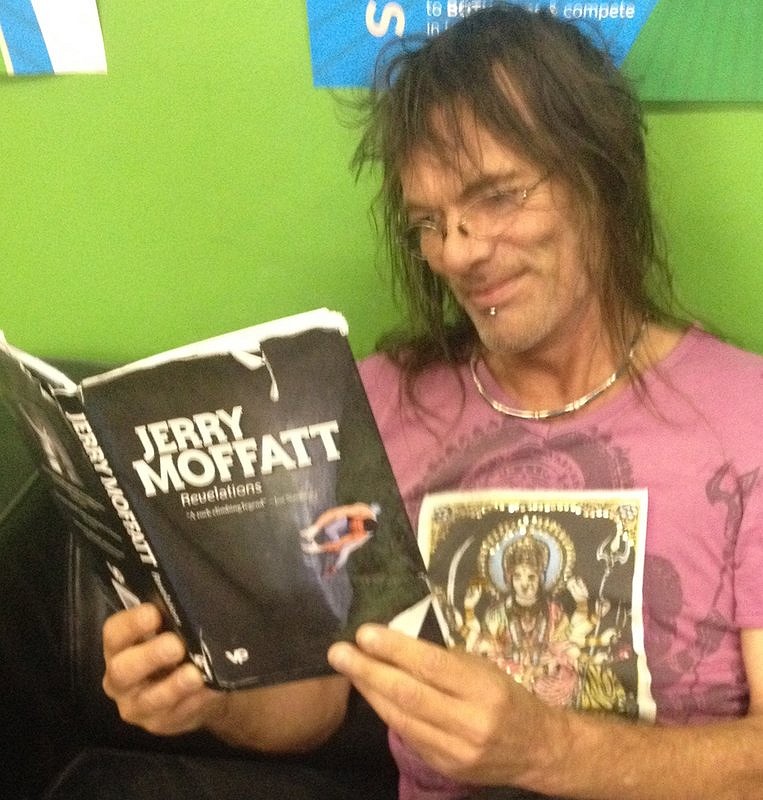
I had a really big day at Stoney Middleton soloing to prepare. First I did Wee Dorris, Pickpocket and Mottled Wall; all E4's. I did those nearly every day and had them so wired that it did not really count. The next routes I soloed were not practised except Kellogg which I had probably done three times over two years. I started off on Kellogg E5 6b, then did Special K E5 6a, Kingdom Come E5 6b, Our Father E4 6b, Scoop Wall E2 5c and Dies Irae E2 5c [today's grades]. All those routes are on Windy Ledge, so on a lot of them a fall off the start would probably mean you've had it. I woke up one morning, felt good and just didn't believe I was going to die that day. It was in the days before sponsorship, so I didn't even really tell anybody or write to magazines, that was probably my best day soloing prior to Master's Wall.
I soloed a bunch of routes on Cloggy for a couple of days like Great Wall, The Bouldest, Curving Arête (all E4) and a few others I can't remember. I had a rest day, then did Master's. It was really scary because I had only looked at a few moves around the crux area on abseil. The next day I soloed all those routes on the Cromlech. I did it all in a really small timeframe. Two days later, one of my best friends died soloing in the Llanberis Pass. I didn't solo again for about another year.
AP: Now my timeline may be out here but didn't you first start going to Europe and The States around this time? Please enlighten us to the order of events – and particularly the mental preparations you undertook prior to heading off on numerous odysseys to do the hardest routes in the world. You were obviously supremely fit and training hard but part of '85/6 was delayed due to surgery.
The list goes on: wasn't it Chouca, Le Minimum, La Rage de Vivre, Pappy On Sight, Bidule, The Face, Genesis, Equinox, Phoenix, Midnight Lightning, Super Imjin, etc. etc. around the mid to late eighties with Masterclass at Pen Trwyn thrown in there somewhere? Then the Smith Rock routes and...and...and?
Such dedication and constant 'psyche'. Where from Jerry?
JM: Like I said I never had any problem with motivation in the early 80s. Some of those routes you mentioned were repeats. Masterclass in the summer of '83 was pretty big, at 8a it was probably the first in the world. I was just speaking to Steve McClure yesterday who said he did it recently and confirmed it as being 8a.
With regards to the other routes you mentioned, I think I got the third ascent of Le Minimum and La Rage de Vivre coming back just after my injuries. They were the hardest climbs in the world at that time. I might have got the second ascent of La Rage, I'm not sure
Back in '82 to '84, that was my best period. I was definitely climbing a lot better than anyone else I had seen, I had onsighted 7c+ (Pol Pot, Verdon) when the next best was only doing about 7b. That was the best period in my climbing career before I got injured and stopped for two years. Let's not go there!
AP: You always had the 'mindset' for bouldering and I remember many long, bitter winters when you'd hitchhike out to Stoney to boulder at Tom's Roof all by yourself. The mental stimulation to do that day after day was remarkable and you gained tons of respect for your dedication from 'us lot'; your contemporaries. Later on, young Ben Moon moved to Sheffield and we'd all train on each other's rudimentary 'woodies' in basements and garages – the 'Cellar-Dwellers'. Ben must've been perfect motivation as he was so much better than 'us lot' and so was just the partner you needed at the time.
Surely Ben was influential and obviously arrived in the right place at the right time. How much did having a training and bouldering partner – and friend – add to your motivation to burn the young upstart off?
JM: I always had a great time climbing with Ben. I'm actually about three years older so I had already done and probably had my best climbing years before I met Ben. As for the motivation, I was pretty self-motivated anyway but it was nice to train with somebody. When we trained in my cellar it was always pretty equal; there was never a problem that I could do that Ben couldn't do and vice versa. There was obviously competition but it was always friendly and a lot of fun to the benefit of us both.
AP: Many of your boulder problems are still heralded as 'way ahead of their time' and seldom repeated. So when really did you shift from route climbing to predominantly bouldering?
JM: My motivation for bouldering and doing routes always varied. I never had a time in my career when I only did routes, I had to mix the year up with a bit of training and bouldering. I suppose finally I got to the point when nobody would belay me anymore because I was so bad-tempered.
Seriously though, the training for routes takes so much more hard work; it was easier just to go bouldering and I didn't want to spend ages indoors training endurance. Being outside somewhere not too crowded is and always has been really important to my climbing.
AP: You made an extremely impressive return to sport climbing back at our old haunt LPT for Liquid Ambar (which is only marginally harder than Mayfair) and, like Revelations, wasn't it the hardest route in Britain at the time? You must've been super-psyched and so mentally prepared for that route; Please, do tell, what's the secret Jez?
JM: It's funny to think when we did Mayfair it was a really hard route for its time. It was just before my 17th birthday, and you must have been about the same age. That was a great day I will never forget it. It's such a great time when you start climbing.
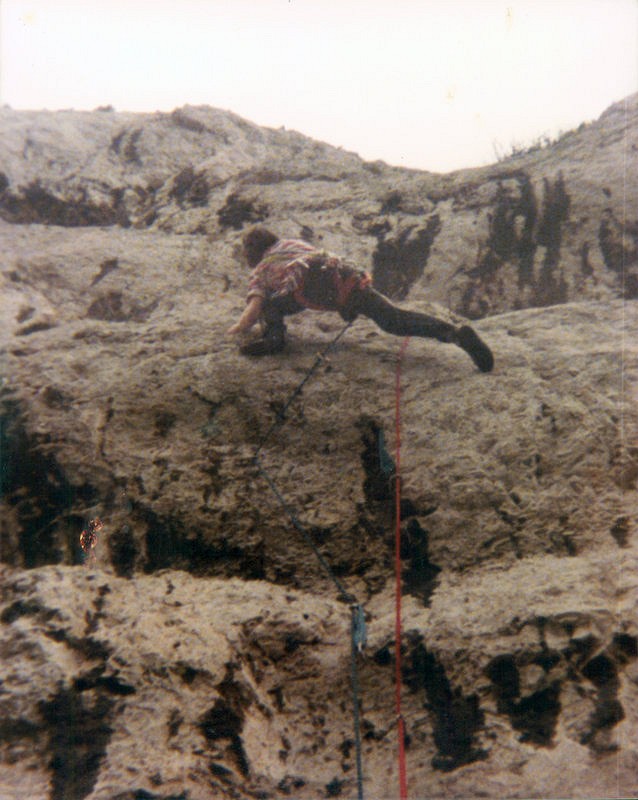
Yes, Revelations was certainly the hardest route in Britain and only one of a few 8a+ routes in the world. It's now been upgraded to 8B. Liquid Ambar was the first British 8c, now upgraded to 8c+, which would have been the first in the world. So hard to say which was first and it all gets rather tiresome. It was a hard route, I fell off the last move the year before then crashed my bike badly and broke a few bones, otherwise I would have done it in '89. Liquid Ambar is a fantastic line and I'm really proud of it. Particularly nice that it's on the Great Orme where you and I started.
AP: OK, so I've missed loads of other milestones in your illustrious climbing career so feel free to throw in your most satisfying moments of defeating not only the physical challenges but the mental ones too.
JM: Biggest milestones for me were probably doing the first 8a, 8a+ and 8c+, which was Masterclass in 1983, The Face in 1983 and Liquid Ambar in 1990. Boulder problems: Superman at 8A+ in 1988 and The Dominator 8b in 1993 were probably the first of the grade as well. I won most of the biggest climbing competitions at the time. I did hard routes on grit and a lot of dangerous solos and felt like I had covered all types of climbing. I always wanted to be an all round rock climber. I never did mountains or alpine stuff as it seems too dangerous and I definitely would have been rubbish at it.
I'm quite proud of the work I did with Boreal working with Bachar. Everyone climbed with boots which went over the ankle and they were quite stiff. I like the Ninja slipper and got a pair made with laces, which I wore when I won the competition in Leeds '89. Now all climbing shoes are based around that model.
The Foundry climbing wall in Sheffield, which I own with Paul Reeve, was the very start of climbing as many people know it now. It was the first bouldering wall (as far as I know) which had matting and problems marked up. It was revolutionary at the time but is now the norm and there are thousands of climbing walls.
AP: So Jez, moving swiftly on; are we to assume you have far too much free time on your hands these days - hence the hours, days, weeks and months it actually takes to write a decent book? Plus, what was the motivation to write 'Mastermind' and can it translate to sports of any other genre such as golf, tennis or athletics?
Have you canvassed the subject with other professional sports people - particularly outside of climbing?
JM: You are absolutely right there Andy - it takes so much time to write a book. First to get this stuff down and then the editing. I am actually doing the book with a guy called Hannes from the famous climbing wall in Germany called Café Kraft. They have done a couple of training books which sold really well. Many of the best climbers from all over the world go there. It is where Alex Megos trains, so it's quite famous. I was over there chatting to Hannes telling him how I would like to do a book on sports psychology as it had always fascinated me. Straight away he said, 'Let's do it together!' and I am really happy to be working with him and his wife Marion. Both of them come from a graphic design background and I'm really confident that the book looks fantastic, it's very modern.
A lot of the stuff in there is what I used to do and I have read and researched loads of books, mainly because it's something I am interested in. I have also interviewed Professor Lew Hardy from Bangor University - a leading world renowned expert in sport psychology. His import was really useful because he explained why certain things work. It would definitely transcend climbing and be useful for all sports in dealing with pressure and trying to perform as it's the same in most sports.
The last few chapters deal with the individual elements of climbing: bouldering, soloing, red-pointing, onsighting, trad climbing and competitions. There are different mental approaches needed for different elements in climbing. I go through them all in detail in the book. In competitions for example, you are trying to beat other people. That's the objective and you also have a completely different environment in which to perform.
Different things work for different people. I am absolutely convinced that Mastermind will be of benefit to climbers of any grade. Confidence is a big aspect and there is some great stuff on how to improve your confidence.
AP: I reckon you nicked my 'Punk in the Gym' 'cunning plan' of inviting friends, contemporaries and peers to contribute to the narrative in 'Mastermind' so from whom did you seek council, or opinion from and are there any similarities - or radical differences, in their take?
(Oh and thanks for my invite, Not!).
JM: I think it's fascinating to know what people are thinking when they're performing. I thought it would be great to know how the most successful climbers right now think when they're under pressure trying to win a competition or do the hardest redpoint in the world. I wanted the book to be modern, so I decided to interview the climbers who are right at the top of the game now. People have been really generous with their time and have helped out loads. People who really helped out were Chris Sharma, Alex Megos, Adam Ondra, Tommy Caldwell, Alex Honnold, Pete Whittaker, Mayan Smith-Gobat, Kilian Fischuber, Anna Stöhr, Margo Hayes, Leo Houlding, Mich Kemeter and mountaineer Sandy Allen.
At the end of the book the climbers have written a short piece on what they feel was their best day's climbing. I wanted that in there just to try and inspire people at the end of the book. We've got some really good photos and I think the book would sell well just for the photographs.
AP: Wanna know what I like most about you Jerry? F*ck-all you handsome bstrd!
(You know I love you really).
Hey, when and where can we buy your book?
The book will be out in September. It will be printed in both German and English. If you want to get a little bit more fun and success from your climbing this book will really help.
It has been great staying in touch with you, Andy. Thanks for the interview.
- INTERVIEW: Andy Pollitt and Louise Shepherd 10 May, 2018
- INTERVIEW: Andy Pollitt and Stevie Haston 6 Apr, 2018
- ARTICLE: In Memory of Pete Kirton 9 Nov, 2017
- INTERVIEW: Kim Carrigan and Andy Pollitt 11 Aug, 2017
- INTERVIEW: Gary Gibson and Andy Pollitt 4 Jul, 2017
- INTERVIEW: Andy Pollitt & 'Big' Ron Fawcett 19 Jun, 2017
- INTERVIEW: The Human Fly - Andy Pollitt and Mark Leach 25 May, 2017
- INTERVIEW: Andy Pollitt and Chris 'Christmas' Hamper 21 Apr, 2017



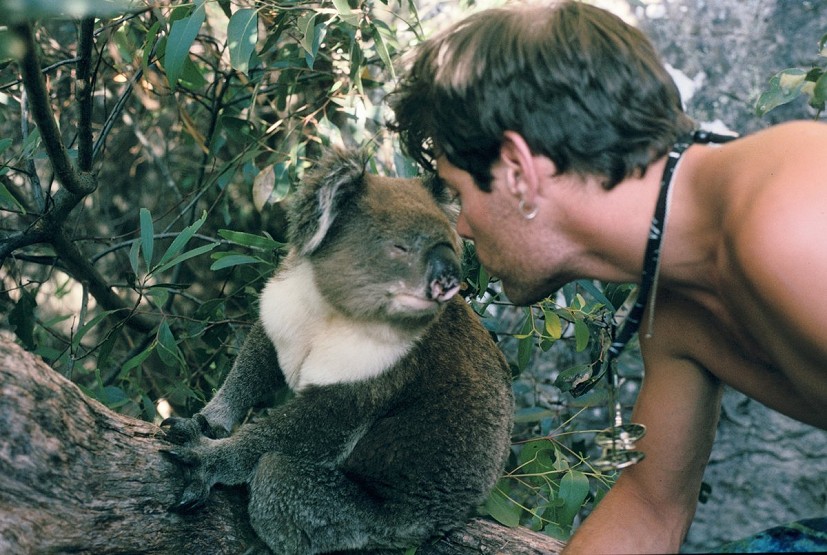

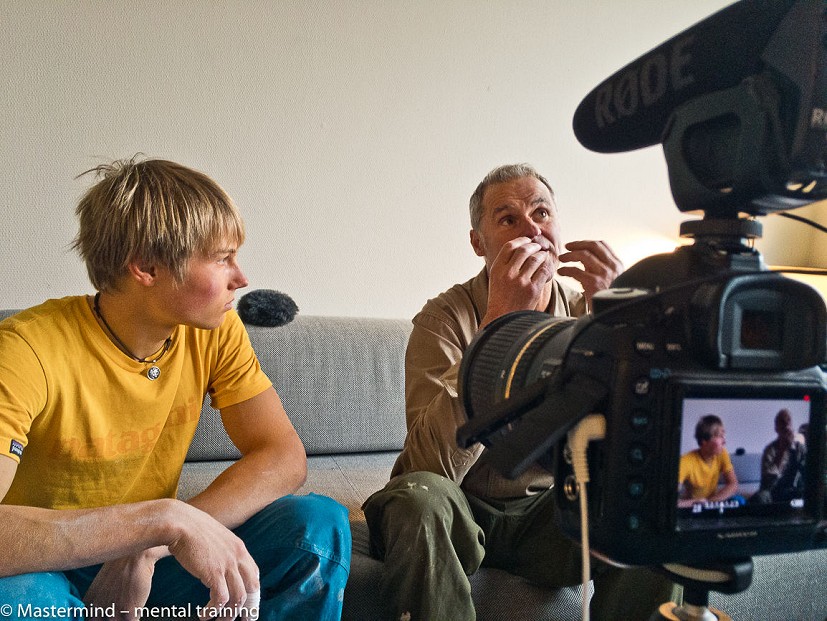
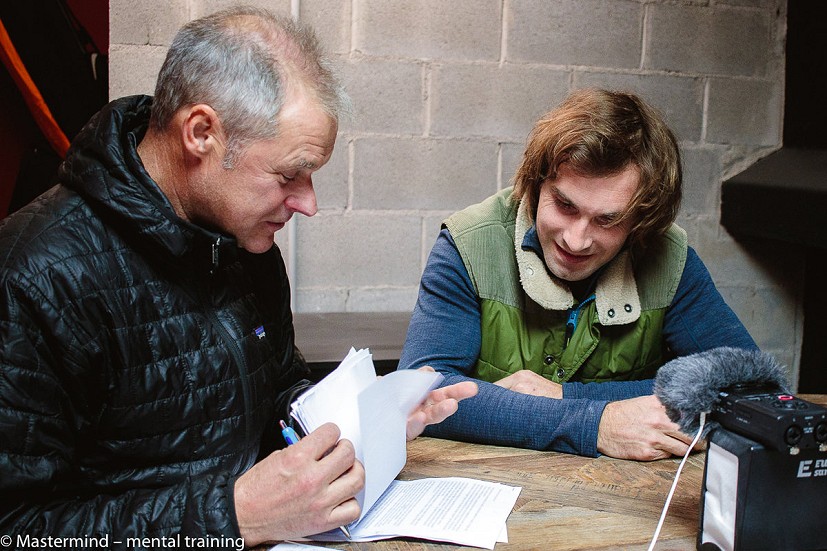







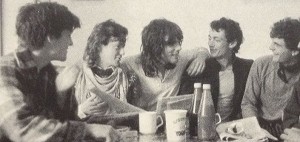

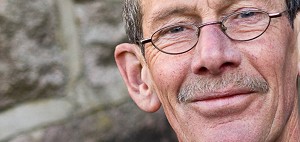

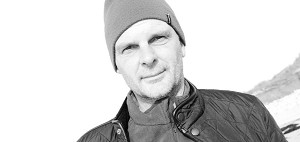



Comments